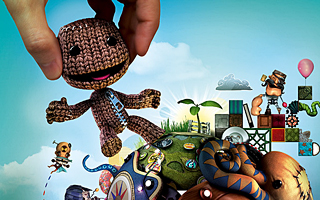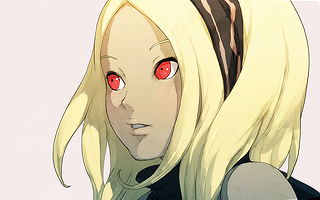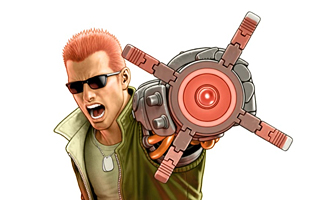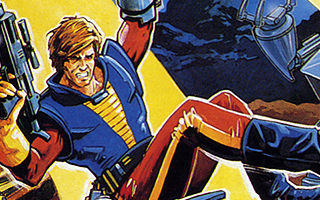3rd Generation Gems
Top 10 Overlooked Games from the 3rd Generation of Video Games!
Each generation seems to produce a number of games that are completely overlooked or underrated. Despite my efforts to recognize the best games on each platform, there are bound to be some that go unmentioned. This list aims to highlight games from the third generation of video games that should be mentioned alongside the classics. Whether they missed the mark with critics or they were simply ignored by consumers, the games listed here deserved a lot more attention than they received. Games that are based off of licensed properties will generally not be considered. If a game is a part of a series or if it was successful enough to warrant a sequel, then it will also be ineligible for this list.
10
Cobra Triangle
NES (1989)

Cobra Triangle is one of the best 8-bit games that Rare ever developed. As you ride your boat through the game’s 25 stages, you’ll be faced with deadly whirlpools, strong currents, floating logs, icebergs, gun turrets, electric beams, and even UFOs. To survive, you’ll have to take advantage of the game’s power up system and upgrade your acceleration, top speed, and firing power. You’ll also gain the ability to fire heat-seeking missiles or use temporary force fields. What really makes Cobra Triangle special is the sheer variety in the levels. In addition to the racing stages, other levels will have you collecting pods, disposing of dangerous mines, navigating through hazard-filled rivers, jumping over waterfalls, guarding helpless swimmers, and frying giant sea monsters. Cobra Triangle successfully combines elements from racing and action games and throws in a little bit of strategy just for fun. It’s a shame that Cobra Triangle never had a sequel, but its inclusion on Rare Replay will hopefully allow more gamers to appreciate its uniqueness.
9
Gangster Town
Sega Master System (1987)

Gangster Town is a light gun game set in 1920s America in which you assume the role of an FBI agent trying to take down the mob. The game opens with a chase scene in which gangsters shoot at you from their moving vehicle. From there, you’ll move onto city streets, into a bar, and then to the final showdown in a shipyard. There are also training and bonus rounds as well. The behavior of your enemies is sure to keep things interesting as you progress. They’ll fire at you from open windows, pop up from under manhole covers, and use street walkers as human shields. The game is well-animated, and you can’t help but love the way the gangsters turn into floating angels after they have been shot. Sega’s Phaser is precise enough that you can actually shoot the hats off the gangsters’ heads! The game also features something that was sadly missing in many light gun games – namely, support for two players. Despite its innovations, Gangster Town never got its due. It’s arguably the single greatest light gun game released on any console in the 1980s.
8
The Battle of Olympus
NES (1988)

If you were to take Zelda II, add some Greek Mythology, mix in some more Zelda II, and add a pinch of Zelda II, the end result would be a lot like The Battle of Olympus. The game tells the story of a man name Orpheus and follows his quest to rescue his dead wife from the clutches of Hades. During his adventure, Orpheus must seek help from various Greek gods like Zeus, Athena, Hermes, Apollo, Poseidon, Hephaestos, Aries, and Artemis. Most of these gods will present you with new items that will help you on your journey. The Sandals of Hermes will allow you to walk on ceilings, the Shield of Athena will protect you from enemy attacks, and the Harp of Apollo will summon Pegasus. Orpheus will also encounter a myriad of mythological creatures like the cyclops, sirens, centaurs, and hydras. The level design is pretty uneventful at times, but there is a lot of area to explore and plenty of secrets to discover. While it may be difficult to overlook its severe lack of originality, The Battle of Olympus is still a great game in its own right.
7
Kabuki: Quantum Fighter
NES (1990)

Kabuki: Quantum Fighter puts players in the shoes of a military agent named Scott O’Connor who agrees to have his brain transferred into binary code in order to infiltrate the planet’s “Main Defense Computer” and stop a dangerous computer virus. Once he enters the program, Scott transforms into a kabuki dancer for some unknown reason. Like anyone else in his position, he opts to use his giant hair to whip his enemies to death. If that doesn’t sell you on the game, then nothing will. Kabuki could be likened to Ninja Gaiden or Sunsoft’s Batman, and players are able to perform some pretty impressive acrobatics as they climb up walls, shimmy across ceilings, and swing from one platform to the next. The levels are filled with conveyor belts, icy surfaces, flowing water, and other hazards, and the enemies are almost as strange as the storyline itself. It’s not a lengthy adventure, but the action is fast, the gameplay is fluid, and the concept is weird even by NES standards.
6
Metal Storm
NES (1991)

Looking at Metal Storm, it’s hard to understand why the game didn’t get more attention when it was released. With its colorful backgrounds, impressive animation, and large sprites, Metal Storm boasts some of the most impressive visuals from any NES game of its era. The game even makes use of parallax scrolling effects! As good as the game looks, it plays even better. The big draw of Metal Storm is its gravity-based gameplay. With the simple press of a button, you will be able to reverse the game’s gravity and walk on the ceilings. Frequently reversing and normalizing the gravity field is essential in order to avoid obstacles and to progress through the stages. You’ll also have to be mindful of the enemies, as they are affected by the changes in the gravity too. It sounds like a simple gimmick, but the execution is brilliant. Other games of the era (including Strider and Mega Man 5) contained gravity-based sections, but Metal Storm was almost entirely centered around the concept. Metal Storm is certainly worth checking out, especially for fans of Contra, R-Type, or Isaac Newton.
5
The Magic of Scheherazade
NES (1987)

The Magic of Scheherazade follows an Arabian magician on a quest to defeat an evil wizard and rescue his captured girlfriend. Controlled from an overhead view, your character is equipped with a sword for close-range attacks and a magic rod to attack enemies from afar. There are also a wide range of spells to learn, and players can choose between one of three character classes. During the game, you’ll gather information in towns, gamble at casinos, revive fallen party members at Mosques, learn new skills at Magic University, barter for items in shops, gain experience points by defeating enemies, and explore a multitude of underground mazes. While most of the action takes place in real-time, there are also occasional turn-based encounters. Certain combinations of characters will have advantages over specific enemy formations, adding an element of strategy to the turn-based battles. There are a nearly a dozen characters that will join your party along the way – including a genie, a flying monkey, and a robot. You can also hire additional troopers to help. One of the coolest parts about the game is the ability to travel to different time periods. This allows you to recruit new party members and learn new spells, but it also affects the game in other ways. For example, planting a seed in the past can cause a tree to appear in the future. It’s a shame that this extremely ambitious and innovative game went unnoticed by so many gamers.
4
Gimmick!
NES (1992)

Sunsoft deserves to be mentioned alongside Capcom and Konami as one of the premier third-party developers for the NES. They were best known for Blaster Master and Batman, but Gimmick! might very well be their magnum opus. If I was asked to choose the most technically impressive NES game, I would choose Gimmick! in a heartbeat. The use of color is amazing and the animation makes the game feel alive. Sunsoft had a knack for making great-sounding NES games, but Gimmick! pushed beyond the boundaries of what the NES was capable of and included its own built-in sound chip to allow for more complex music. Bright and colorful platformers were plentiful on the NES, but Gimmick! set itself apart from the rest with its surprisingly complex physics. Your character will actually slow down while walking up sloped surfaces and speed up on the way down. Remarkably, the enemies are affected by physics in the same way the players are. The game has a much steeper learning curve than typical NES platformers, but it’s a lot more rewarding as a result. An English port of the game was released in Scandinavia in 1992, but the announced American version never came to be.
3
Gun-Nac
NES (1990)

Compile overhead shooters are defined by their fast-moving gameplay and their astonishing number of weapons and upgrades. In the case of Gun-Nac, there are five weapons to obtain that can each be upgraded to eight levels. Additionally, there are four different bomb variations and a special wing attachment that drastically increases your fire power. One of its innovations is the ability to collect money and buy supplies between stages. Where the game really differs from other Compile shooters, however, is in its sense of humor. The story is downright ridiculous, and your enemies include giant space rabbits that attack you with carrot missiles. Compile had a reputation for pushing the limits of gaming consoles, and Gun-Nac was no different. With large sprites, detailed backgrounds, and endless onslaughts of enemy fighters, Gun-Nac is one of the most intense NES games ever. It’s also one of the more accessible shooters on the system, and offers four difficulty levels to choose from. Gun-Nac is a blast to play and may very well be the best 8-Bit shooter of all time.
2
Shatterhand
NES (1991)

Shatterhand is a side-scrolling action game that was developed by Natsume. Its title is a surprisingly accurate description of the game itself. Mega Man shoots things, Simon Belmont whips things, and Steve Hermann punches things with his cybernetic fists! Steve’s hands are powerful enough to shatter metal or knock bullets out of the air, but it never hurts to have some assistance. On that note, Steve has the ability to call on a number of robotic satellites to aid him in battle. There are eight different robotic companions to experiment with, and each has their own unique abilities. One robot fires lasers, another attacks with a giant sword, and one makes use of a flamethrower. Given the right circumstances, players can even combine with their robot sidekick to gain additional powers. Its graphics, music, gameplay, and production values are all in line with what you’d expect from a top-tier NES game, but Shatterhand was yet another game released after the start of the 16-bit revolution that never really got its due.
1
Little Samson
NES (1992)

The first thing you’ll notice about Little Samson is how beautiful it is. It stands as one of the best-looking NES games of all time, and it’s truly amazing what Taito was able to accomplish with the limited color pallet of the NES. The game itself is pretty remarkable as well. There are four characters to play as, and they are all radically different from one another. Samson can jump higher than his friends and has the ability to climb walls and ceilings. Kikira is a fire-breathing dragon with the power of flight. The hulking Gamm has powerful punches and the highest defense. K.O. is a mouse who is small enough to traverse some narrow passages that are otherwise inaccessible. The ability to switch from one character to the another is a lot of fun and adds an element of strategy to the game. The NES had no shortage of fantastic action/platform games, but Little Samson was one of the very best. Unfortunately, it was released very late into the console’s lifespan (the SNES had already celebrated its first birthday when Little Samson was released) so the game was overlooked by consumers and critics alike.





Do you agree with this list? Let us know what you think by leaving a comment below. Your opinion matters!